Read the Following Selection
Read the following selection, or click on the play button below to listen aloud.
Klondike Gold Rush
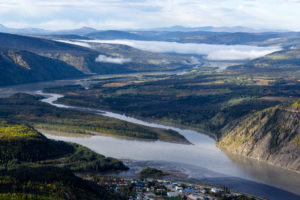
Klondike River
When gold was discovered in Canada’s Yukon, there was a stampede north by would-be gold miners and people hoping to strike it rich. It was an incredible time in Canada’s history.
Bonanza!
The area in Yukon where gold was found was known as the Klondike. It lies along the Klondike River, a name that evolved from the First Nations word Tr’ondëk, meaning “hammerstone water.” Europeans found the word hard to say, and it eventually became Klondike.
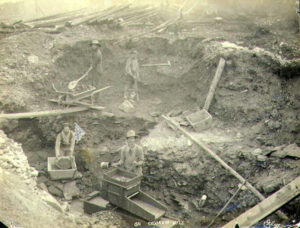
Gold miners, Bonanza Creek, 1899
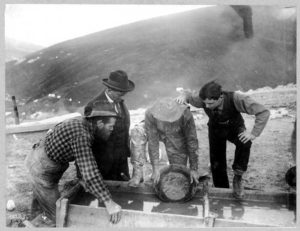
panning for gold, Bonanza Creek, 1899
Gold was discovered in August 1896 on a small river off the Klondike River. The stream was soon renamed Bonanza Creek—bonanza means “sudden great luck or wealth”—and it became world-famous. Tens of thousands of would-be miners left home and headed to the Klondike.
Chilkoot Pass
Most of the prospectors sailed up Canada’s west coast from the United States. To get inland to the Klondike, the miners had to trek through the Coast Mountains of Alaska and northern British Columbia. The most famous part of the trek was the Chilkoot Pass.
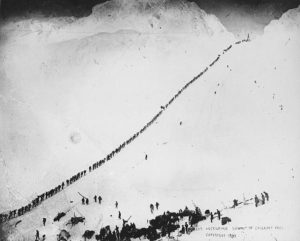
Klondikers ascending to the summit of Chilkoot Pass, 1898
This famous pass was a staircase 1,500 steps high and stretching far up into the surrounding mountains. Miners arrived there with all of their supplies and equipment. But the pass was too narrow for wagons or horses, so the miners had to carry everything on their backs, making many trips. In winter, the trail was covered with slippery ice. Workers cut out steps that became known as the “Golden Stairs.” When miners made it to the top of the slope, they dropped off their heavy load of equipment, then sat down and slid all the way back to the bottom to get the next load to carry up.
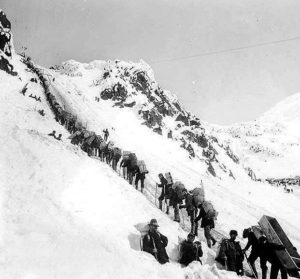
Picture of women trekking through the Chilkoot Pass.
About 1,500 women trekked through the Chilkoot Pass. It was harder for them than for the men, since they had to wear long, heavy skirts, as well as petticoats and corsets. The women went along to cook for their husbands, fathers, and brothers, but for many women, there was another reason they made the long tough trip. The truth was that they did not want to miss out on the adventure! Some of the women also panned for gold, just as the men did.
A Lasting Legacy
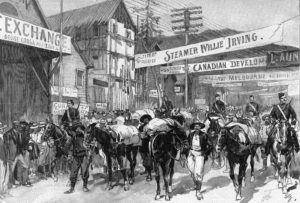
Dawson City Klondike Gold Rush, 1899
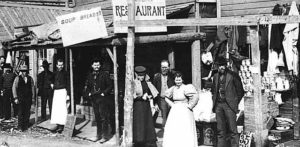
Picture of outside a restaurant in Dawson City, 1898
Some miners became rich in the Klondike, while others found nothing. Another effect of the Gold Rush was that First Nations peoples were pushed aside and badly treated during gold fever. The Gold Rush also changed how people saw Canada’s Far North. Around the world, people realized it is more than a barren wasteland and that there are many important activities and interesting people there. Gold is still mined in the area.
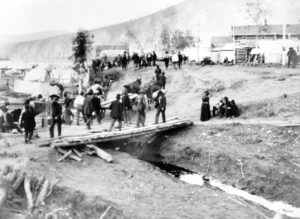
Klondike base camp, Dawson City, 1898
The influx of so many people changed Yukon. Dawson City was set up in 1896 and was the centre of the Gold Rush. It was the capital of Yukon until 1952 when Whitehorse was named the capital. That increased population also meant that the Northwest Territories were split up in 1898 and the new Yukon Territory (today, simply Yukon) was formed.
Now, show what you know!
Complete some questions about the reading selection by clicking “Begin Questions” below.









